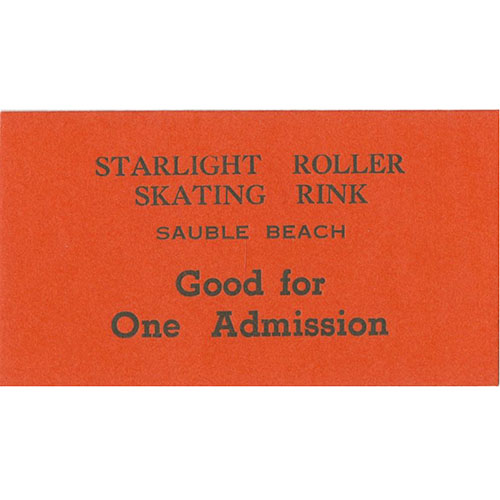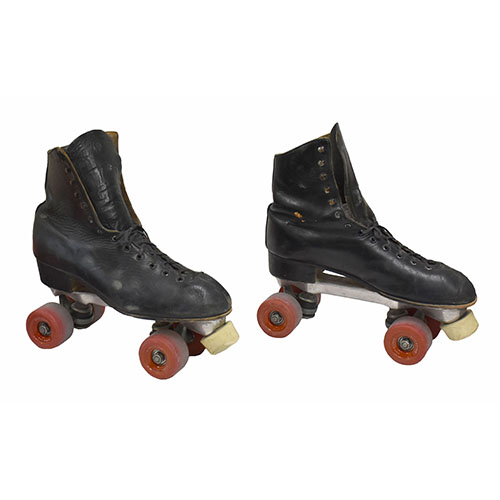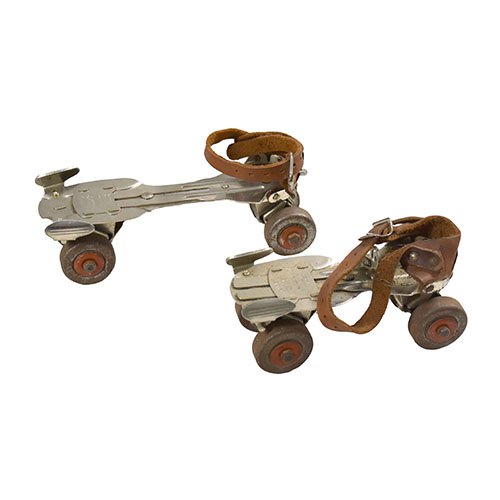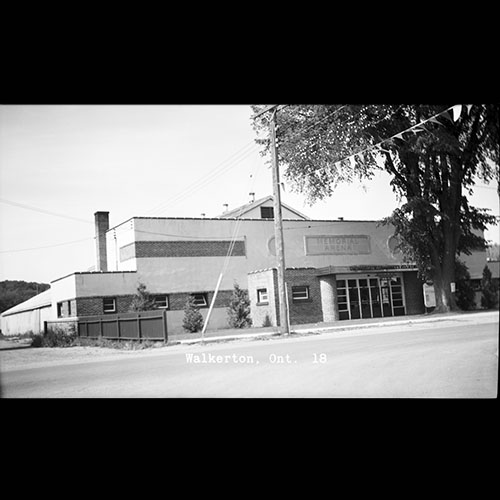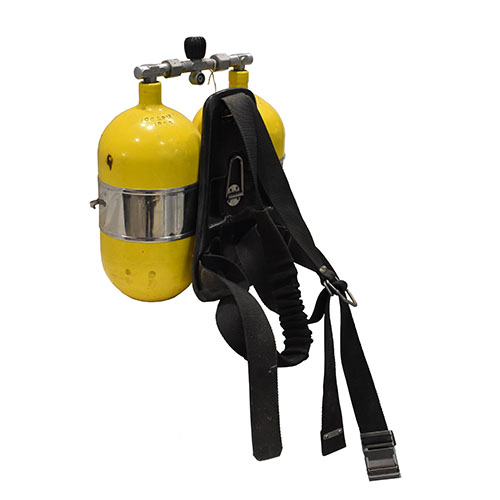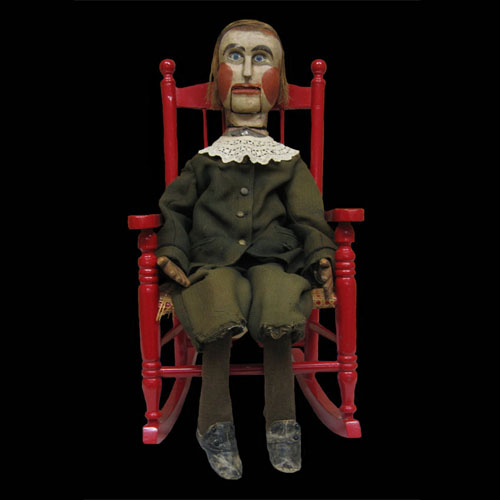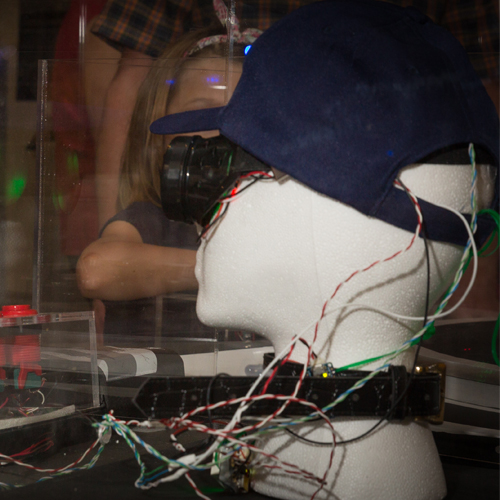Roller skating has been a popular past time for many generations. From the time of the invention of roller skates in the late 18th century, their design has evolved from the various styles we know today. The earlier designs consisted of an “in-line” wheel style which was like ice skating. This style made it difficult to turn and stop, and eventually the design was transformed into the four wheel “quad” roller skate. This style made roller skating more maneuverable and functional which caused a boom of mass production.
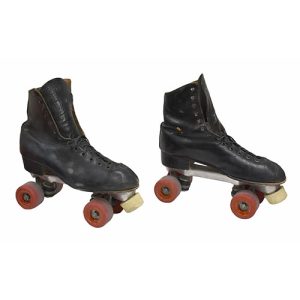
With new technologies and materials available, the quad style evolved to a boot and the addition of a plastic wheels and a stopper. This style gained popularity in the 1960’s and 1970’s with the disco music era.
This style was the go-to for many years until the invention of a new design of in-line skates or ‘Rollerblades’. The Rollerblade was designed by hockey playing brothers who focused on maneuverability and speed. The new in-line skate was like a hockey skate with adjustable straps and was lightweight. It opened the door for new sports and allowed athletes to train all year round.
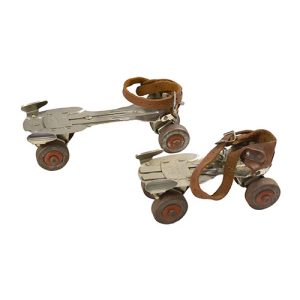 Roller skating became a popular activity that all people and ages could participate. In the Victorian era, it was an opportunity for men and women to be involved in an appropriate activity together. It was also marketed as a healthy exercise program and an alternative mode of transportation. It became a social experience and roller rinks started as early as the 1880’s.
Roller skating became a popular activity that all people and ages could participate. In the Victorian era, it was an opportunity for men and women to be involved in an appropriate activity together. It was also marketed as a healthy exercise program and an alternative mode of transportation. It became a social experience and roller rinks started as early as the 1880’s.
Roller rinks were a space that allowed roller skating to happen no matter the weather. Music and dancing made the roller rink a place to gather and socialize. With the evolving music styles, the disco era boosted roller skating to a new level. It is likely the most recognizable and iconic look to roller skating. When the disco era fizzled, the popularity of roller skating went with it. Roller rinks could not sustain the hit and eventually closed. Some buildings were demolished or repurposed, but some rinks can still be found today.
Roller Rinks in Bruce County
Port Elgin’s arena was originally built in the 1880’s as a roller-skating rink. Mr. Campbell built the roller rink and would use the space for skating in the winter. The floor would be covered with sand to create the ice surface. Eventually the floor was removed and only ice skating was kept by the new owners. The arena was destroyed by fire in 1960 and a new arena was built.
In Chesley, roller skating became popular after the First World War. In 1918, Roy and Alexander Lustig managed to have a hardwood floor installed at the skating rink and bought an inventory of roller skates. For 25 cents, a visitor could use the skates and skate at their leisure for the evening. By 1929 the floor was badly damaged by the skate’s metal rollers and wasn’t repaired until 1938 when roller skating made a comeback. When the new Sports Complex was created, the smooth cement floors were perfect for the skate’s new plastic rollers and once again roller skating became the popular social activity in the late 1970’s.
Wiarton saw two buildings convert areas specifically for roller skating. In 1885, Howard Clifton purchased the former skating and curling rink and converted it for roller skating. A few years later in 1887, M.W. Shaw and John Kelly leased a building that was used for a furniture factory and converted the space for roller skating. Roller skating continued to be a popular activity and was overseen by the Recreation Committee from their formation in 1963. Eventually roller skating became an obsolete recreational activity and was no longer part of their program.
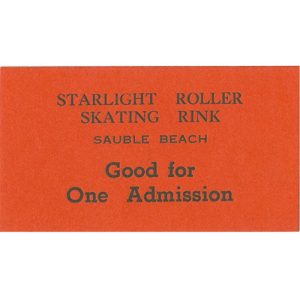 In the late 1960’s the Starlight Roller rink in Sauble Beach was purchased by the Scott-Robertson Enterprises Limited and was under the management of Esther Scott. It was a popular hang-out place and was another successful business for the Scott family. The Starlight Roller Rink was the go-to fun activity in the busy tourist season. They eventually hired a couple to help with the daily operations including skate rentals and music. The rink was later sold to William (Bill) and Donna Graham ca. 1975 and continued to operate for several years.
In the late 1960’s the Starlight Roller rink in Sauble Beach was purchased by the Scott-Robertson Enterprises Limited and was under the management of Esther Scott. It was a popular hang-out place and was another successful business for the Scott family. The Starlight Roller Rink was the go-to fun activity in the busy tourist season. They eventually hired a couple to help with the daily operations including skate rentals and music. The rink was later sold to William (Bill) and Donna Graham ca. 1975 and continued to operate for several years.
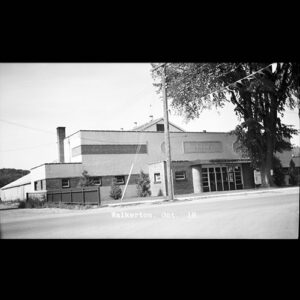 Walkerton’s arena was a popular spot for roller skating in the late 1940’s and 1950’s. Originally called the Confederation Arena, the name was changed in 1947 to the Memorial Arena in honour of the lives lost in the Second World War. The Memorial Arena’s artificial ice was proposed to the citizens of Walkerton and with a 73% vote in favor, the artificial ice was conducted in late 1948. There was a proposal to lay cement with the pipes so the surface could be used for roller skating.
Walkerton’s arena was a popular spot for roller skating in the late 1940’s and 1950’s. Originally called the Confederation Arena, the name was changed in 1947 to the Memorial Arena in honour of the lives lost in the Second World War. The Memorial Arena’s artificial ice was proposed to the citizens of Walkerton and with a 73% vote in favor, the artificial ice was conducted in late 1948. There was a proposal to lay cement with the pipes so the surface could be used for roller skating.
In the month of June, the Memorial Arena would have several weeks of public roller skating for all ages. There would be music and free skate rentals and Saturdays were for the children. For 35cents you could skate for a few hours with music and refreshments. For the beginners, you could try it for 25cents which was the same price for children.
The Memorial Arena was host to a roller-skating event held in 1959. A group from the London Roller Skating Club performed for the audience with a total of four acts. In between acts there was public roller skating. This was the first ever roller-skating show in Walkerton.
An unexpected boom for roller skating happened during the COVID-19 Pandemic. People were looking for an activity that allowed for fun and exercise and could be done safely with others. Sales spiked and it became difficult to purchase any style of roller skates. Social media platforms like Instagram and TikTok allowed a new generation to learn about roller skating and influencers were beginning to create tutorial videos. Social media has also helped small businesses who were able to remain open over the years. Now bloggers are posting stories of roller rinks in major cities and have made it a ‘To-Do’ activity when visiting.
Roller skating has been a favourite pastime and has made memories for many generations. Whether you’re a professional or beginner, roller skating can be a lifetime of fun!

